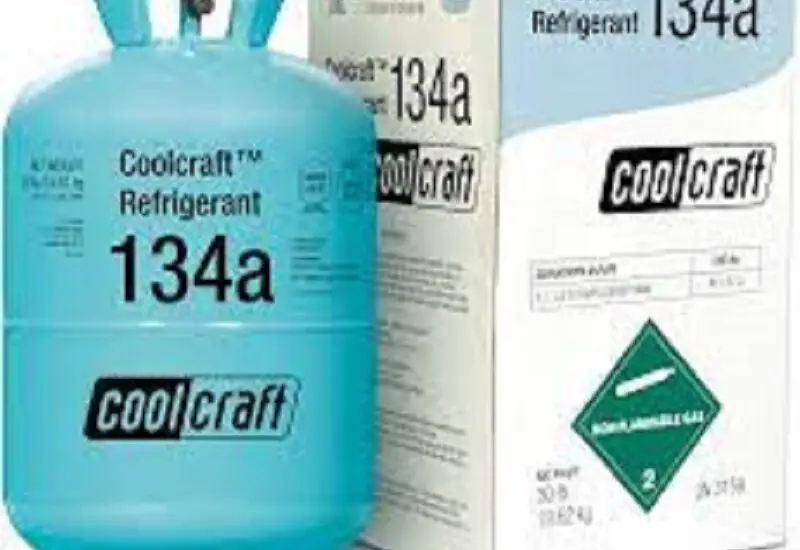134a refrigerant, you’ve probably heard of it, right? It’s that magic substance humming away inside your car’s AC, your fridge, and a ton of other everyday items. But what do we really know about it? Time to shed some light on this cool character.

Table of Contents
Introduction to 134a Refrigerant
Let’s break the ice with a quick intro. 134a refrigerant, scientifically known as Tetrafluoroethane, is a type of gas used in various cooling systems. It’s a bit of a big deal in the HVAC world, but it’s also sparked its fair share of debate. Stick around, we’re just warming up!
What is 134a Refrigerant?
Picture this: It’s a hot day, you turn on the AC, and suddenly, you’re hit with a cool breeze. That’s 134a refrigerant in action. It’s a hydrofluorocarbon (HFC) that doesn’t deplete the ozone layer. See, according to our pals over at EPA, it’s much safer for the environment than some of its predecessors.
Common Uses of 134a Refrigerant
Where would you bump into 134a? Well, it’s pretty popular in car air conditioning systems, refrigerators, and heat pumps. Even some aerosol propellants use it. Who knew, right?
Detailed 134a Refrigerant Review
Alright, now that we’re familiar with 134a, let’s take a closer look. We’re going to dig into its performance, cost-effectiveness, environmental impact, and safety. Ready to chill out with some cool facts?
Performance Review
First things first, how well does 134a do its job? Spoiler alert: It’s pretty impressive.
Cooling Efficiency
Compared to other refrigerants, 134a packs quite a punch. It cools quickly and efficiently. But don’t just take my word for it, the ASHRAE backs this up with their research.
Reliability and Lifespan
As for reliability and lifespan, 134a is like that trusty friend who’s always there for you. It tends to last a long time without needing replacement. Sounds pretty good, huh?
For more articles like this click here – – Articles on Refrigerants: The Ultimate Guide to Understanding Them
Cost-Effectiveness Review
What about the price tag? Is 134a going to burn a hole in your pocket? Let’s find out.
Initial Costs
Compared to other refrigerants, the initial cost of 134a is typically lower. So, it’s a bit of a budget-friendly option. Not too shabby, right?
Operating and Maintenance Costs
On the operating and maintenance side, 134a also scores pretty well. It’s efficient, so it doesn’t guzzle energy. Plus, since it’s reliable, you won’t be shelling out for repairs or replacements too often.
Environmental Impact Review
We’ve all heard the phrase ‘climate change’, right? So, how does 134a measure up in terms of environmental impact?
Global Warming Potential (GWP)
While 134a doesn’t harm the ozone layer, it does have a high Global Warming Potential (GWP). According to the IPCC, it’s something we need to keep an eye on.
Ozone Depletion Potential (ODP)
Here’s some good news. 134a has an Ozone Depletion Potential (ODP) of zero. Yup, you read that right, zero. So, it’s a thumbs up for the ozone layer.
Safety Review
Last but not least, is 134a safe to use? Let’s see what the experts say.
Toxicity
When it comes to toxicity, 134a is generally safe. Just remember to handle it properly, like you would with any chemical, okay?
Flammability
Worried about fire hazards? You can breathe easy. 134a is non-flammable under normal conditions. It’s like having a safety net.
Conclusion: Is 134a Refrigerant the Right Choice?
So, is 134a the right choice for you? Well, it’s efficient, cost-effective, safe, and doesn’t deplete the ozone layer. But remember, it does have a high GWP. So, like with anything, it’s all about weighing up the pros and cons.